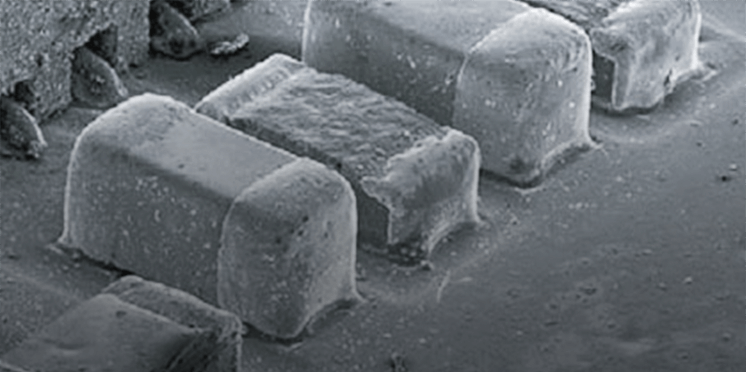ZAF(ザフ)補正法
ZAF(ザフ)補正法
ZAF correction method
[目次:分光分析(EELS/EDS/電子構造)]
特性X線の分光分析(EDS)において、目的元素の定量に用いる補正法。試料が厚くなると(測定元素により違いがあるが、ほぼ数10nm以上)、放出される特性X線の強度は原子番号効果、吸収効果、蛍光励起効果を受けるので、これらの三つの効果を補正する必要がある。未知試料と標準試料(単純組成の化合物)から得たX線の相対強度を求め、その値にこれら三つの効果の補正をほどこす。EPMAの場合は三つの効果の補正をするが、TEMの場合には一番効果の大きい吸収補正だけを考慮することが多い。通常は、試料が薄い場合のクリフ・ロリマー法(薄膜近似法)を適用し、それだけでも比較的高い精度の定量ができる。
In spectroscopic analysis of characteristic X-rays, the "ZAF correction method" is used for quantitative analysis of target elements. As a specimen is thicker (~several 10 nm or thicker though depending on measured elements), the intensity of the emitted characteristic X-rays is influenced by the atomic-number effect, the absorption effect and the fluorescence excitation effect. Corrections of these three effects are required. In actual correction, the relative X-ray intensities obtained from an unknown specimen against those from a standard specimen (usually a compound of a simple composition) are measured. And then, the corrections of the three effects are made to the relative intensities. In the case of EPMA, the three effects are corrected. On the other hand, in the case of TEM, only the absorption effect, which has the largest effect, is taken into account in many cases. Normally, the Cliff-Lorimer method (thin-film approximation method) for a thin specimen is applied, which often provides good quantitative results with a relatively high accuracy.
関連用語から探す
説明に「ZAF(ザフ)補正法」が含まれている用語






